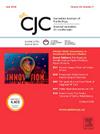The Comparative Epidemiology, Pathophysiology and Management of Cardiogenic Shock Associated With Acute Myocardial Infarction and Advanced Heart Failure
IF 5.8
2区 医学
Q1 CARDIAC & CARDIOVASCULAR SYSTEMS
引用次数: 0
Abstract
Cardiogenic shock (CS) results from low cardiac output caused by myocardial dysfunction, coupled with systemic end-organ tissue hypoperfusion and elevated ventricular filling pressures, along a spectrum of shock severity. This narrative review aims to compare the epidemiology, pathophysiology, and contemporary management of 2 common etiologies of CS caused by acute myocardial infarction (AMI-CS) and advanced heart failure (HF-CS). CS complicates up to 14% of AMI and 5% of HF admissions. Rapid therapeutic intervention after prompt recognition of CS etiology is the mainstay toward improving clinical outcomes and mitigating end-organ sequelae and death. In AMI-CS, persistent hypotension often leads to subsequent hypoperfusion and congestion, and early culprit coronary artery lesion revascularization is critical. In HF-CS, congestion often precedes hypoperfusion and hypotension, and targeting the underlying nonischemic cause of myocardial dysfunction is key. Tailoring of hemodynamic strategies with vasoactive agents and temporary mechanical circulatory and end-organ support to manage the predominant ventricular failure, hemometabolic phenotypes, and shock severity associated with each etiology is discussed. Given the limited evidence-base in CS care, we also highlight potential knowledge gaps ripe for future exploration.

心源性休克并发急性心肌梗死和晚期心力衰竭的比较流行病学、病理生理学和治疗
心源性休克(CS)是由于心肌功能障碍引起的心输出量低,加上全身终末器官组织灌注不足和心室充盈压力升高,沿休克严重程度的谱。本综述旨在比较急性心肌梗死(AMI-CS)和晚期心力衰竭(HF-CS)引起的两种常见CS病因的流行病学、病理生理学和当代治疗。14%的AMI患者和5%的心衰患者出现CS并发症。在及时识别CS病因后进行快速治疗干预是改善临床结果和减轻终末器官后遗症和死亡的主要手段。在AMI-CS中,持续低血压常导致随后的灌注不足和充血,早期罪魁祸首冠状动脉病变血运重建至关重要。在HF-CS中,充血通常先于灌注不足和低血压,针对心肌功能障碍的潜在非缺血性原因是关键。通过血管活性药物和临时机械循环和终末器官支持来调整血流动力学策略,以管理主要的心室衰竭,血液代谢表型和与每种病因相关的休克严重程度。鉴于CS护理的证据基础有限,我们还强调了未来探索成熟的潜在知识差距。
本文章由计算机程序翻译,如有差异,请以英文原文为准。
求助全文
约1分钟内获得全文
求助全文
来源期刊

Canadian Journal of Cardiology
医学-心血管系统
CiteScore
9.20
自引率
8.10%
发文量
546
审稿时长
32 days
期刊介绍:
The Canadian Journal of Cardiology (CJC) is the official journal of the Canadian Cardiovascular Society (CCS). The CJC is a vehicle for the international dissemination of new knowledge in cardiology and cardiovascular science, particularly serving as the major venue for Canadian cardiovascular medicine.
 求助内容:
求助内容: 应助结果提醒方式:
应助结果提醒方式:


